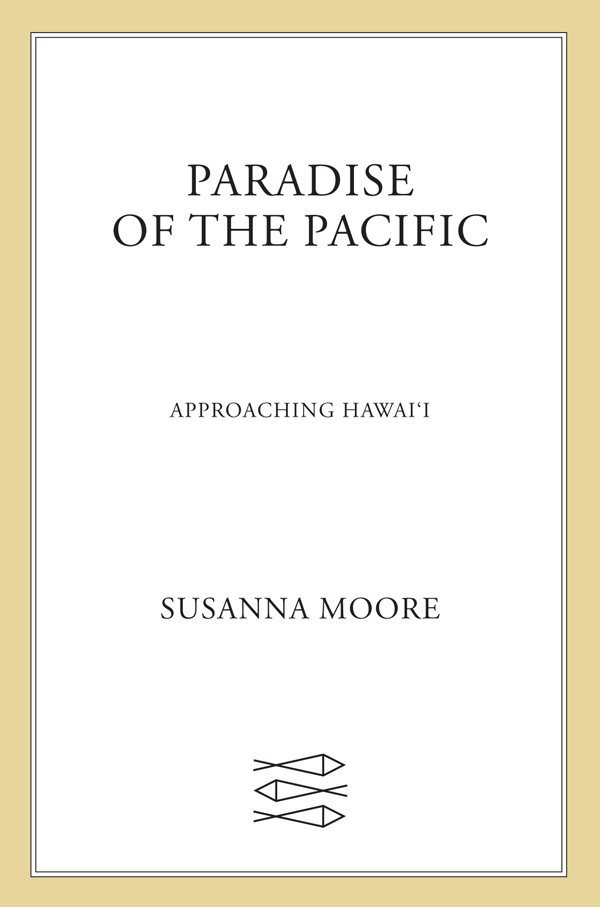
Paradise of the Pacific
Approaching Hawaii
کتاب های مرتبط
- اطلاعات
- نقد و بررسی
- دیدگاه کاربران
نقد و بررسی

June 1, 2015
Novelist and memoirist Moore (The Life of Objects) takes inspiration from her childhood in Hawaii to craft an insightful history of the archipelago, from its first wave of settlers in the 6th century through its annexation by the U.S. in 1898. She focuses largely on the tumultuous years following Capt. James Cook’s 1778 discovery of the islands and how contact with the outside world disrupted everything. As cultures clash, several major narratives emerge. The first is the effect of trade and commerce: “The chiefs acquired new desires, which demanded a different kind of labor from their people.” Though island culture was transformed through industry, it was radically upended with the introduction of Christianity: “The fixed world of the Hawaiians, governed by a hereditary ali’i and priesthood with a distinctive system of kapu , suddenly became one of flux, if not chaos.” Moore is honest about the peculiarities of the old ways—“to be Hawaiian before the overthrow of the old gods in 1819 was to live in an unending state of terror”—and she’s equally upfront about the devastation wrought in the aftermath. This is a fascinating and well-balanced look at how a unique culture came to be and the heartbreaking manner of its end. Illus. Agent: Stephanie Cabot, the Gernert Agency.

Starred review from June 1, 2015
Moore delves once again into the subject of Hawaii, a setting that has served as a backdrop for several of her novels (The Whiteness of Bones; My Old Sweetheart, etc.). The author's memoirs Light Years: A Girlhood in Hawaii and I Myself Have Seen It: The Myth of Hawaii provided looks at life in Hawaii beyond the tourist haunts and staged luaus. With this latest offering, Moore digs deep and delivers a thoroughly researched account of Hawaii's distinct culture and history. Of note are the examination of traditional religious beliefs and the introduction of Christianity and Western ideals to the islands, the unification of the area under one monarch, and, finally, the annexation of Hawaii by the United States. VERDICT Moore's background in storytelling radiates throughout this work, creating a quick- paced and well-crafted narrative. Highly recommended for the armchair historian and those intrigued by Hawaiian history, maritime exploration, and the history of Christian missionaries. For readers with a continued fascination in the development of the Hawaiian Islands, perusing Julia Flynn Siler's Lost Kingdom might also prove a rewarding endeavor. [See Prepub Alert, 2/23/15.]--Crystal Goldman, Univ. of California, San Diego Libs.
Copyright 2015 Library Journal, LLC Used with permission.

July 1, 2015
Born of volcanic violence, the Hawaiian Islands have perpetuated that literal upheaval throughout their tortured and tumultuous history, most notably during the late eighteenth century, after generations of internecine rivalry resulted in gruesome battles for tribal supremacy. Though often stereotyped as a tranquil, peace-loving people, in reality, the native islanders were bloodthirsty warriors led by valiant, vain, and vicious leaders. Like most isolated societiesthe closest landmass is 2,000 miles awayHawaiians lived, and died, by a complex, ever-changing web of rules and taboos dictated by the pagan gods they worshipped and according to the whimsy of the reigning chiefs. Things did not improve when Western explorers and Christian missionaries discovered the islands, bringing with them both disease and demands that Hawaiians replace one set of strict codes of behavior with another. Moore's comprehensive history of this oft-misunderstood culture relies extensively on the journals of sailors, explorers, missionaries, and islanders themselves, offering a direct and authentic glimpse into a paradise that was frequently anything but.(Reprinted with permission of Booklist, copyright 2015, American Library Association.)

























دیدگاه کاربران